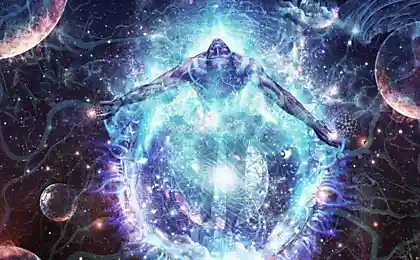709
Trance states of consciousness and its extent:

Going into a trance state, one gradually descends from the surface of ordinary consciousness to deeper levels. At the same time it would be useful to have some methods for measuring the degree of progress status. Below are some of the symptoms indicates that achieving different levels of depth of trance. For added convenience, all of these symptoms are divided into four main sections: relaxing, easy, medium and deep trance. One has only to note that, even in a state of deep trance, you do not necessarily notice all the symptoms that are listed below.
During the relaxation you go from ordinary consciousness to the next state: the feeling of physical relaxation and heaviness in the limbs, weakness, relax the mind, a sense of apathy and indifference, nor are concentrated, blankly looking into space view (if the eyes are open), reluctance to move limbs. With the deepening of this state and entering a light trance, breathing becomes more rare and profound at the same time decreasing the heart rate.
In a state of light trance progressive sense of reluctance to move, speak, think or act. Some people may experience involuntary twitching of the mouth, jaw and sometimes the eyes. You may also experience a feeling of heaviness in the whole body, and a sense of detachment. At this level, it is already possible occurrence of visual illusions. As we move to the next stage, you begin to realize that you are in a state of trance, but are experiencing difficulties when trying to describe the sensations arising from this.
In a state of trance moderate you know that you are in a trance, and feel a sense of partial amnesia, if not consciously choose to do otherwise. Make myself certain things, you can get any part of the dead body to the pain, and to experience the illusion of touch and feel of any taste or smell. In this condition the person is more sensitive to changes in atmospheric pressure and temperature. As we move to the next stage there is a feeling of complete numbness of limbs or the entire body.
Being in a deep trance, you can open your eyes without changing its status. At the same time you will have the ability to control body functions such as heart rate, blood pressure levels, digestion and body temperature. You will be able to give their limbs or the entire body absolute stiffness and hardness. You will see the ability to recover lost memories and experience the sensation of the disappearance of children. Being in a deep trance, you can fully enjoy the feeling of lightness, floating, flying, and, of course, to experience visual and auditory hallucinations, both positive and negative nature. With an appropriate suggestion they occur not only in a state of trance, but after leaving it during normal awareness. In this case, the term "positive hallucination" means that your consciousness perceives what is actually there, and the term "negative hallucination" means that consciousness is a result of a specific suggestion does not notice the presence of real-life things. In a state of deep trance, you can stimulate the appearance of dreams and visions, as in the time of the trance, and, at the appropriate suggestion, later, during normal sleep.
Each stage of trance can have a useful application. For example, in a state of light or medium trance, you can begin to study the practices of shamanic journeys, during which will see, hear, touch and even smell the worlds adjacent to ours. During shallow trance these trips seem to be very similar to the usual fantasy or very vivid dreams, so probably you will doubt whether you have seen the worlds real or a product of the imagination. However, as you will learn to sink deeper and deeper, traveling will become more vivid and alive. And when you start to go into a deep trance, you visit the worlds will look and feel just as real as usual, the world around us.
Causeless, frequent, prolonged sadness - is a good sign:
The assemblage point How to find your assemblage point?
























